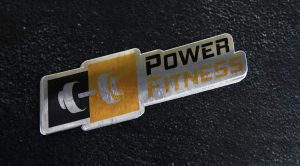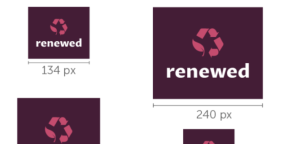Creating a logo for your business can be a daunting task, especially if you have no design experience. However, with the right tools and guidance, anyone can create a professional-looking logo that accurately represents their brand. In this article, we will provide you with step-by-step instructions on how to create a logo that stands out and communicates your brand’s message effectively.
The first step in creating a logo is to identify your brand’s unique qualities and values. Your logo should represent your brand’s personality and communicate its message to your target audience. Once you have a clear understanding of your brand’s identity, you can start brainstorming ideas for your logo. This can include choosing a color scheme, font, and graphic elements that align with your brand’s image.
Next, you will need to choose a logo design tool that fits your needs and budget. There are many free and paid options available, each with its own set of features and customization options. Some popular logo design tools include Canva, Adobe Express, and Looka. Once you have selected a design tool, you can start experimenting with different logo designs until you find one that accurately represents your brand and appeals to your target audience.
As you dive into the design process, it can be helpful to utilize project scheduling tools to keep everything organized. Platforms like Trello, Asana, or Monday.com allow you to set clear goals and deadlines for each stage of your logo creation. This way, you can manage your time effectively, ensuring that your project stays on track while allowing for creative exploration.
Understanding the Basics of Logo Design
When it comes to designing a logo, there are some basic principles that you should keep in mind to ensure that your logo is effective in representing your brand. In this section, we will discuss the basics of logo design, including the importance of understanding your brand identity, the key elements of a logo, and the importance of choosing the right layout and design.
Understanding Your Brand Identity
Before you begin designing your logo, it’s important to understand your brand identity. This includes your brand’s vision, mission, and values, as well as your target audience and the message you want to convey through your logo. By understanding your brand identity, you can create a logo that accurately represents your brand and resonates with your target audience.
The Key Elements of a Logo
There are several key elements that make up a logo, including the design, color, typography, and layout. The design of your logo should be simple, memorable, and unique, while also reflecting your brand identity. The color of your logo should be chosen carefully, as different colors can evoke different emotions and have different meanings. The typography of your logo should be legible and easy to read, while also reflecting your brand’s personality. Finally, the layout of your logo should be balanced and visually appealing.
Choosing the Right Layout and Design
When it comes to choosing the layout and design of your logo, there are several options to consider. Some common logo layouts include the wordmark, lettermark, pictorial mark, abstract mark, and combination mark. Each layout has its own unique advantages and disadvantages, and the right choice will depend on your brand identity and the message you want to convey through your logo. Additionally, the design of your logo should be scalable, meaning it should look good at any size, from a small icon to a large billboard.
In conclusion, understanding the basics of logo design is crucial for creating a logo that accurately represents your brand and resonates with your target audience. By understanding your brand identity, the key elements of a logo, and choosing the right layout and design, you can create a logo that is both effective and visually appealing.
Choosing the Right Elements for Your Logo
When creating a logo, it’s essential to choose the right elements that will represent your brand effectively. Here are two crucial elements to consider: colors and fonts.
Colors and Their Significance
Colors can evoke emotions and convey messages, making them an essential part of your logo design. Here are some common colors and their significance:
- Red: passion, energy, and excitement
- Blue: trust, security, and professionalism
- Green: growth, health, and nature
- Yellow: optimism, happiness, and creativity
- Purple: luxury, creativity, and sophistication
- Orange: friendliness, warmth, and enthusiasm
When choosing colors for your logo, consider your brand’s personality and values. Use a color palette that aligns with your brand’s message and appeals to your target audience. Avoid using too many colors or gradient colors that can make your logo look cluttered.
Importance of Fonts
Fonts can also impact your logo’s overall look and feel. Here are some common font types and their characteristics:
- Serif: traditional, elegant, and formal
- Sans-serif: modern, clean, and simple
- Script: elegant, feminine, and artistic
- Display: bold, creative, and attention-grabbing
When selecting fonts for your logo, consider your brand’s personality and message. Choose a font that is easy to read and complements your logo design. Avoid using too many fonts or font files that can make your logo look unprofessional.
In addition to colors and fonts, other essential elements to consider when creating a logo include spacing and vector files. Ensure that your logo has enough spacing to make it easy to read and recognize. Use vector files such as SVG vector files to ensure that your logo can be scaled to any size without losing quality.
By customizing your logo elements, you can create a unique and memorable logo that represents your brand effectively.
Utilizing Logo Design Templates
If you’re looking to create a logo for your business, logo design templates can be a great starting point. They can help you save time and money, and provide inspiration for your own unique design. In this section, we’ll cover how to find the right template and customize it to make it your own.
Finding the Right Template
When searching for logo templates, it’s important to keep your brand identity in mind. Look for templates that reflect the style and tone you want to convey. You can find logo templates on various websites, including Canva, Envato Elements, and Looka. These websites offer a wide variety of logo templates to choose from, so you’re sure to find one that fits your needs.
Once you’ve found a few templates that you like, narrow down your choices by considering the following:
- Industry: Look for templates that are relevant to your industry.
- Colors: Consider the colors that will best represent your brand.
- Style: Choose a style that matches your brand’s personality.
Customizing Templates
Once you’ve found a template that you like, it’s time to make it your own. Here are a few tips for customizing logo templates:
- Replace the text: Start by replacing the template’s text with your business name and tagline.
- Choose your colors: Customize the template’s colors to match your brand’s color palette.
- Change the font: Experiment with different fonts to find one that fits your brand’s personality.
- Add graphics: Add graphics or icons that represent your brand or industry.
When customizing a logo template, it’s important to strike a balance between making it your own and staying true to the template’s design. Avoid making too many changes that could make the logo look disjointed or unprofessional.
In conclusion, logo design templates can be a great starting point for creating a logo for your business. By finding the right template and customizing it to make it your own, you can save time and money while still creating a professional-looking logo that reflects your brand’s identity.
Creating a Logo with a Logo Maker
If you’re looking to create a logo for your business or personal brand, using a logo maker can be a quick and easy solution. With the help of an online logo maker, you can design a professional-looking logo without any design experience. Here’s how you can create a logo using a logo maker.
Using an Online Logo Maker
To create a logo using an online logo maker, you’ll first need to choose a logo maker that suits your needs. There are several free logo makers available online, such as Canva and Adobe Express. Once you’ve chosen a logo maker, follow these steps:
- Choose a template: Most logo makers come with a variety of templates that you can choose from. Browse through the templates and choose one that best fits your brand.
- Customize your logo: Once you’ve chosen a template, you can start customizing your logo. Add your brand name, slogan, and any other text you want to include. You can also choose the colors, fonts, and icons that best represent your brand.
- Download your logo: Once you’re happy with your logo, you can download it in various file formats, such as PNG, SVG, and AI. You can also choose the size and resolution of your logo.
Downloading Your Logo
After creating your logo, you’ll want to download it and use it for your branding. Here’s how you can download your logo:
- Choose the file format: Depending on your needs, you can choose the file format that best suits you. PNG is a popular format for web use, while SVG is a vector format that can be scaled to any size without losing quality. AI is a format that can be edited using Adobe Illustrator.
- Choose the size and resolution: Make sure to choose the size and resolution that best fits your needs. If you’re using your logo on a website, a resolution of 72dpi should suffice. If you’re using it for print, you’ll want a higher resolution.
- Save your logo: Once you’ve chosen the file format, size, and resolution, you can save your logo to your computer. You can also choose to save it as a PDF file if you need to share it with others.
Overall, using a logo maker can be a great way to create a professional-looking logo without any design experience. With the help of an online logo maker, you can customize your logo to fit your brand and download it in various file formats.
Finalizing Your Logo Design
After you have gone through the logo design process, it’s time to finalize your logo design. This involves checking for copyright issues, getting customer reviews, and launching your logo. Here are some tips to help you finalize your logo design.
Checking for Copyright Issues
Before you finalize your logo design, it’s important to ensure that it doesn’t infringe on any existing copyrights. You can use online resources to check if any similar logos already exist. This will help you avoid legal issues in the future.
Getting Customer Reviews
Getting feedback from your customers is an important step in finalizing your logo design. You can ask for their opinions on social media or through email surveys. This will help you understand how your customers perceive your brand and whether your logo design aligns with your brand values.
Launching Your Logo
Once you have finalized your logo design, it’s time to launch it on your website and social media profiles. Make sure you have high-resolution versions of your logo design in different formats like EPS and PNG. This will help you use your logo design in different contexts without losing quality.
You can also create a brand kit that includes your logo design, logo colors, slogan, and other branding elements. This will help you maintain consistency across different platforms and grow your brand fast.
To get started, you can use logo design resources like Looka or Wix Logo Maker. These tools use artificial intelligence to generate custom logo designs based on your keywords and preferences. You can also sign up for their logo pro services to get more support and resources.
In addition, you can use social media templates and email signatures to promote your logo design and brand. This will help you create a professional image and attract more customers.
Finally, you can use live chat or email support to get help with any issues related to your logo design or branding. This will help you stay on track and achieve your goals.
Additional Resources and Support
Creating a logo for your business or organization can be a daunting task, but with the right resources and support, you can easily design a logo that represents your brand and resonates with your target audience. In this section, we will provide you with some additional resources and support to help you create a logo that stands out.
Accessing a Library of Resources
One of the best ways to create a logo is by accessing a library of resources. A library of resources can provide you with a wealth of information and inspiration for your logo design. There are many online resources available that offer free access to a library of design resources, including icons, fonts, and color palettes. Some popular options include Canva, Adobe Creative Cloud, and DesignEvo.
Canva is a popular online graphic design platform that offers a wide range of design resources, including templates, icons, and fonts. Adobe Creative Cloud is another popular option that provides access to a wide range of design tools and resources. DesignEvo is a free logo maker that offers a library of resources, including over 10,000 templates, icons, and fonts.
Finding Support
If you need additional support while creating your logo, there are many resources available to help you. One of the most common forms of support is through frequently asked questions (FAQs). FAQs can provide you with answers to common questions and can help you troubleshoot any issues you may encounter while creating your logo.
Another option for support is through live chat. Many online design platforms offer live chat support to help you with any questions or issues you may have while creating your logo. Some popular options include Canva, Adobe Creative Cloud, and DesignEvo.
In addition to FAQs and live chat support, there are many online resources available that provide step-by-step guides and tutorials on how to create a logo. Some popular options include Udemy, Skillshare, and YouTube.
Overall, there are many resources and support options available to help you create a logo that represents your brand and resonates with your target audience. By accessing a library of resources and utilizing support options such as FAQs and live chat, you can easily design a logo that stands out.
Marietta Arnold is a branding and design enthusiast who draws inspiration from hobbies like hiking, photography, and art exploration. With a background in graphic design, she shares insights on branding strategies and logo design trends. Stay updated with Marietta’s work for the latest in branding and design.



